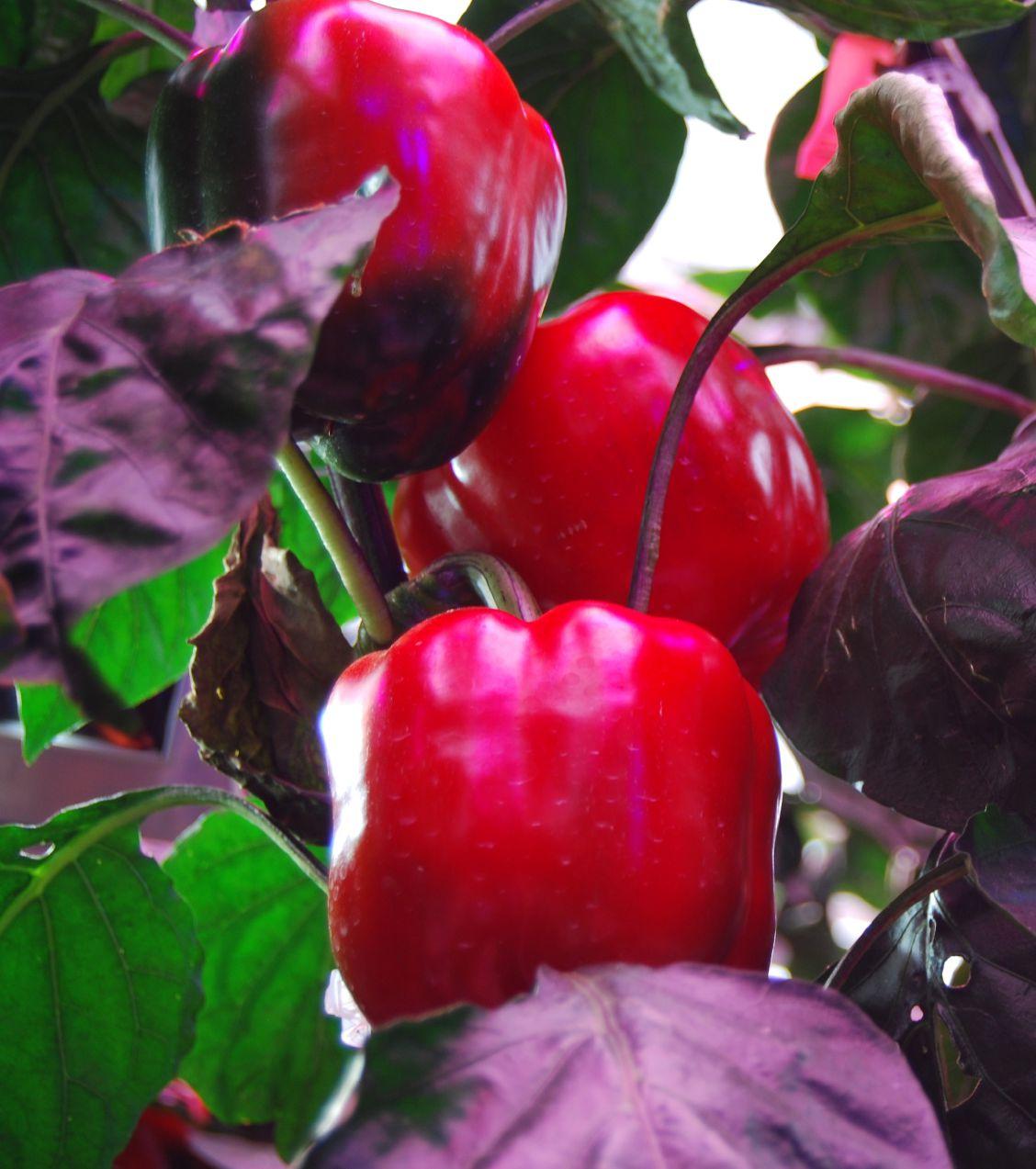
































BY DR. JASON LANOUE
DR. XIUMING HAO
MELHEM SAWAYA



































BY DR. JASON LANOUE
DR. XIUMING HAO
MELHEM SAWAYA

GRETA CHIU | @GreenhouseCan
This issue presents a glimpse of some innovative greenhouse research that’s been continuing outside the COVID spotlight. Do plants need sleep? Do lights affect your biocontrol agents? Do your mums need that much calcium? Can these new varieties survive the heat? Keep turning the page for answers.
But for garden centres, I wanted to usurp this space for timely highlights from a conversation with international retail consultant, John Stanley. We caught up with him at the end of August, following his widely popular webinar on strategies for retailing amid COVID in April.
Many in the gardening sector had a tough spring, but most also had a fantastic summer. “A lot of my clients around the world are saying we’re 30 per cent up over last year,” Stanley shares.
“Pinterest said it started in July,” says Stanley. Indicators point to greater spend on Christmas and decorations, but the shopping will likely start earlier
plants for the bathroom.’ Promote the joy of plants, and how they bring happiness and healthiness. Outdoors, it could be gardens themed around healing, nourishing and sustainability.
With limited travel, staying on top of new ideas will require research and engaging through social channels. This means watching social media feeds, connecting with the consumer and using their language. “Any business that’s not keeping up with their social media would worry me.” But don’t forget to leverage the social role of traditional media, such as local advertising, magazines, radio, and TV, to share positive stories.
Change up key displays to avoid appearing stale. “It doesn’t have to be full of product. But we’ve got to change the sight lines to create the impression that we’re on the ball, that we’re fresh, exciting and providing adventure.” What’s more,
Garden markets should own the health and well-being segment.
than before. As someone who is typically against decorating too far ahead of Christmas, Stanley is prepared to change his stance as the holidays will likely be much bigger this year.
DON’T
“I think the worst thing we can do as we move into a reputed recession is to discount product,” he shares. But rather than selling one plant alone, he suggests marketing ideas. “I would put a number of multi-units or products together to give people ideas, to inspire them and to take them on an adventure.” It could be as simple as the ‘10 best indoor
empower team members to bring new ideas to the business, especially for 2021, so owners aren’t shouldering that burden alone.
Stanley stresses the importance of collaborating within the community, not only between retailers, but other institutions such as aged care centres and hospitals, positioning plant products at the forefront of the health and well-being segment. “Garden markets should own that sector, [and] not be a ‘me too’.”
For more, keep an eye on greenhousecanada.com
Editor GRETA CHIU, MSc. P.Ag greenhouse@annexweb.com 416.510.5163
Associate Publisher NASHELLE BARSKY nbarsky@annexbusinessmedia.com 905.431.8892
Account Coordinator SHANNON DRUMM





Nearly $4.6 million in federal investments was announced to help the Nunavut, Northwest Territories and Yukon agri-food sectors innovate, grow and create jobs. Delivered by CanNor, this funding supports 13 initiatives. Projects include:
• $76,450 to expand ColdAcre Food System’s hydroponic growing facility and establish a mushroom cultivation unit
• $752,800 to develop and implement a web-
based food system in Baker Lake, Arviat, Qikiqtarjuaq, Pond Inlet, and Kimmirut
• $2,000,000 to design, build and install community freezers in Sanirajak (formerly Hall Beach), Baker Lake, and Kimmirut

Aditional funding will come from project participants, helping producers boost profits with new, modern equipment and expand into new markets. Complete story at greenhousecanada.com

Agriculture and AgriFood Canada announced a federal investment of $625,419 to support Les Jardins A. Guérin et Fils, Inc. (JAG) in optimizing growing techniques and performing market testing as they implement a new model for the year-round production of organic, greenhousegrown radishes, the first operation of its kind in Canada.
JAG’s year-round
production will help offset imports of radishes from Mexico and Southern California which were valued at approximately $18.6 million. Once complete, this project is expected to generate $1.3 million in revenue with the production of 460,000 pallets.
“This financial contribution from Agriculture and Agri-Food Canada will accelerate the
The Fonds régionaux de solidarité FTQ Laurentides (FRS) invested $1 million in Serres Frank Zyromski, a young plant cuttings producer who generates 8 to 10 million cuttings annually. Products include geraniums, calibracoas, vegetative petunias, rieger begonias, fuchsias and companion plants. Products are sold to greenhouse operators, distributors and garden centres across Québec, Canada and the United States.
“With this investment, we will be able to optimize our production capacity, in both high and low season, and to boost earnings through exports and the introduction of new products such as organic herbs,” says Nicolas Zyromski, general manager of Serres Frank Zyromski.
Created in 1996, FRS has invested over $1 billion in 1,400 companies, helping to create, maintain or protect close to 52,000 jobs. Source: FRS
development of a brand new greenhouse production in Canada. This innovative organic radish production project will add a new local product to the limited range of products available during the winter season, while responding to growing consumer demand for access to fresh, highquality (physical and taste) and pesticide-free products,” says Pascal
Guérin, Production Manager, Jardins A. Guérin et fils inc.
Founded in 1983, JAG is a family-owned producer of radishes, onions, and carrots. Their radishes currently comprise 29 per cent of Canadian radish production and 47 per cent of Québec production. JAG acquired organic certification for its radishes in November 2018.
Source: AAFC
FoodinsecurityduringCOVID
Source:StatsCan,June2020
Canadians living in households with children were more likely to be food insecure:
19.2% of households with children
12.2% of households without children
Almost 1 in 7 Canadians reported food insecurity April-May 2020

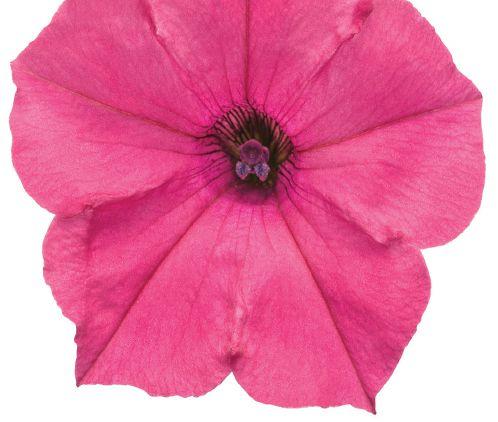



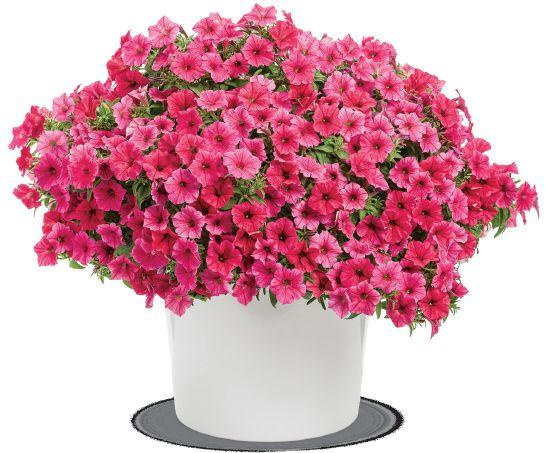




14 new projects have been granted more than $2.4 million in total through the Canada-BC AgriInnovation Program to help create opportunities in the province’s agricultural and technology industries. Recipients include:
• Advanced Intelligent Systems – $469,000 to prototype and test an autonomous pruning robot configured to navigate in a greenhouse and load, trim and unload potted plants
• BC Hot House Foods – $383,100 to develop a method to grow greenhouse strawberries commercially in B.C.
• Ecoation Innovative Solutions – $500,000 to develop and test an automated pest and disease
treatment that can address the issues detected by a monitoring robot using biological control agents and UV-based disinfection
• Kwantlen Polytechnic University – $20,000 to develop and verify a DNA profiling strategy for hydrangeas to accurately identify varieties to ensure consistency and for the development and registration of new varieties
• University of British Columbia – $120,000 to use hemp waste to produce nanocellulose, a light solid substance obtained from plant matter, and develop new hemp nanocellulosebased bioplastic materials for food packaging
Full list at greenhousecanada.com


Lufa Farms launched their fourth commercial rooftop greenhouse in the borough of SaintLaurent, Que. in August. According to the City of Montréal, construction began in September 2019. The greenhouse measures 163,800 square feet—or the equivalent of three football fields—making it the world’s largest rooftop greenhouse.
Lufa Farms says this latest rooftop greenhouse doubles its fresh vegetable production capacity, for a total 300,000 sqft. They began harvesting 10 varieties of tomatoes and three varieties of eggplants on June 26, reaching full production on August 11th. The greenhouse now yields 25,000 lb of produce each week, allowing Lufa Farms to serve more and more Québec families
year-round. The urban farming operation strives for responsible agriculture practices; growing polyculture with no synthetic pesticides, capturing rainwater, recirculating irrigation water and maximizing energy efficiency using energy curtains, antilight pollution blackout curtains, double glass on the perimeter and the passive energy savings of simply being on an urban rooftop.
“Growing food where people live is our mission and this greenhouse is an acceleration of that mission, the timing of which couldn’t be any better as we respond to an ever-growing demand for fresh, local, and responsible foods,” says Lauren Rathmell, co-founder and greenhouse director at Lufa Farms.
As the world responded to COVID-19, local food systems proved resilient and essential.
“In March 2020, we saw a doubling of demand from existing and new Lufavores who couldn’t have been more supportive and understanding. It wasn’t easy, but our team worked incredibly hard and rose up to this challenge. Growing food locally on rooftops and sourcing from local farming families allowed us to swiftly adjust and respond to this demand. We saw what the future looks like and it’s all about local and sustainable,” says Mohamed Hage, co-founder and CEO of Lufa Farms.
In response to COVID-19, along with
enacting stringent safety protocols early on, Lufa Farms launched a sevenday service, tripled its home delivery capacity, launched a number of new software tools, and welcomed over 200 new team members, 35 new local farmers and food makers, and 30,000 new Lufavores. “In a span of three months we built and grew what would have normally taken us years. We were experimenting and learning so much and so fast. We started out naive and young but our culture and mission have been our north star. The Lufa team today is a hardened one, more ready and committed to our mission than ever.” says Rathmell. Lufa Farms built the world’s first commercial rooftop greenhouse in 2010.
Sources: Lufa Farms and Ville de Montréal




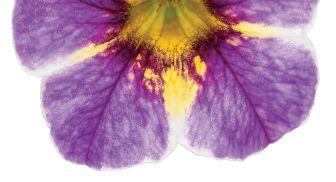







Greenhouse producers that are committed to making measurable progress in energy efficiency and carbon emission reductions may be able to earn a financial reward in the form of lower interest rates. Known as sustainability-linked loans (SLLs), these programs allow financial institutions to support clients in achieving their sustainability goals.

This type of loan category is gathering momentum globally. Initial demand has been coming from European, Asian and American investment-grade companies with a strong commitment to improving their environmental, social and governance (ESG) performance.
The goal of an SLL is to improve a borrower’s sustainability profile by linking credit facilities to sustainability performance targets over a range of categories related to the borrower’s line of business. Examples of sustainable performance targets include energy efficiency, greenhouse gas emissions, renewable energy, water consumption savings, and sustainable farming.
Unlike green bonds or green loans, proceeds from SLLs are not required to be allocated to specific green projects and can be used for general corporate purposes. For greenhouse operators who may be considering changes to their operation, such as facility expansion, off-grid power generation, or new technologies like LED lighting, this new financing option could improve a project proforma.
Credit-worthy companies that have made commitments to reduce energy costs, fossil fuel con-
sumption, carbon intensity of their products or their carbon emissions will want to investigate an SLL. Interest rate reductions frequently range from 3 to10 basis points on a loan, depending on the degree of improvement achieved by an approved borrower.
Bank of Montreal (BMO) issued the country’s first SLL to Maple Leaf Foods, sending a strong message into the market. Companies that seriously address sustainability measures are directly tackling significant business risks. BMO wants to encourage these efforts by translating that lower business risk into lower costs of borrowing.
To receive reduced interest rates, borrowers must clearly communicate their sustainability objectives, setting ambitious and meaningful sustainability performance targets that apply over the lifetime of the loan. Sustainability targets can be internal – defined by the borrower in line with their sustainability strategy – or external – assessed by an independent third-party advisor against external rating criteria. Companies may not necessarily have all the tools to fully implement or report their progress without third party review and ongoing measurement.
John Uhren, head of sustainable finance, products and strategy at BMO highlighted the vital role to be played by independent advisors who can help borrowers verify and report their progress on achieving the targets. Experienced advisors can help their clients develop meaningful energy plans, measure energy use and reduce emissions.
To date, BMO is the only Canadian bank with a structured SLL in place. The Royal Bank of Canada has a Climate Blueprint, the bank’s enterprise climate change strategy to accelerate clean economic growth and to support clients in the transition to a low-carbon economy. Part of the strategy includes providing $100 billion in sustainable financing by 2025.
SLLs provide a tangible financial incentive to credit-worthy borrowers to encourage risk reduction in operations. Financial institutions know that companies performing well socially and environmentally have a reputation for being good financial performers and are likely to emerge more easily from the current economic crisis caused by COVID-19.
Lower operating costs, lower risks, and lower borrowing costs. What is there to not like about SLLs?
Tom Brown is the director of production development for 360 Energy. He can be reached at tom. brown@360energy.net.


es.bayer.ca
Trials show advantage over untreated water.
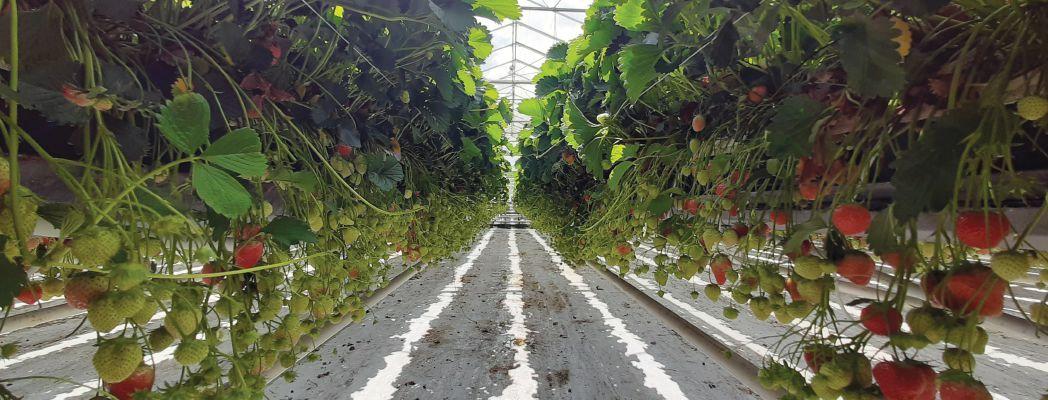
ABOVE
Compared to untreated water, this research study shows how oxygenation can lower the presence of Pythium and Phytophthora.
Oxygen is an important part of the rootzone environment. Not only is it required for growth, but research has shown that it can help increase the uptake of nutrients and suppress disease.
Most of the microorganisms beneficial for plants also favour higher water oxygen levels, explains Michiel de Jong, who heads the European operations of Moleaer, a U.S.-based nanobubble oxygenation equipment maker.
There are various water aeration systems available on the market, most of which use diffusers to blow or mix in air bubbles. However, De Jong claims that “these technologies cannot surpass normal saturation (100 per cent), meaning that the dissolved oxygen they can add to the water is very limited.”
To help reach higher levels of oxygenation, Moleaer uses a different way of introducing oxygen into the water called nanobubbles. Nanobubbles are microscopic bubbles that are designed to remain suspended in water for long periods of time, keeping dissolved oxygen (DO) levels high and constant. Their nanobubble generator is said to add between 8 and 40 ppm of oxygen, increasing oxygenation levels by as much as 500 per cent.
To test the effects of using nanobubbles in greenhouse strawberries. Netherlands-based Delphy conducted a hydroponics study at its Research Institute, in partnership with Moleaer.
In the study, the roots of an untreated group of plants were exposed to DO levels between 7 and 9 mg/L, while the second group was exposed to nanobubble-treated water for a DO level of 30 mg/L. The research team concluded that the treated group achieved a yield increase of 14 per cent compared to the control group (8.2 kg vs 7.2 kg). The team also found that plants treated with nanobubbles had 74 percent lower Pythium counts, healthier root masses and lower instances of Phytophthora
Delphy scientist Bart Jongenelen notes in the study summary that “for these trials, we chose to focus on yield and to follow the root development with visual inspections. Clear differences emerged from this…During the visual root inspections, we observed that the control was much more affected by Phytophthora infestans. The roots with the nanobubbles looked much healthier.”
De Jong explains that the nanobubbles serve a dual purpose. “First, nanobubbles deliver oxygen extremely efficiently into water which allows us to maintain very high saturation levels with minimal loss,” he says. “This enables us to deliver significantly more oxygen into the root zone and promote healthy root development. Second, the oxidative properties of the oxygen nanobubbles break down algae and suppress pathogens, effectively improving the water quality and maintaining a more hygienic irrigation system.”













Exploring 24-hour LED lighting for year-round greenhouse vegetable production.
BY DR. JASON LANOUE AND DR. XIUMING HAO
The Canadian greenhouse vegetable market is a $1.5 billion industry and consumer demand for year-round supply of high-quality vegetables continues to rise. However, greenhouse vegetable production during the winter months is limited in Canada due to the lack of natural solar radiation. Between the months of November and February, the daily light integral (DLI) from sunlight is often less than 10 mol·m-2·day-1. That is to say, the amount of light reaching the plant over a 24-hour period is far below the typically required 30 mol·m-2·day-1 for greenhouse tomato and cucumber production. For this reason, supplemental lighting has been adopted to increase the DLI to levels that will sustain yearround production.
The cost of electricity for lighting is one of the largest expenses for year-round greenhouse vegetable production. Furthermore, the rapid adoption of supplemental lighting has led to a shortage in power supply available to the Ontario greenhouse industry, especially in the
Kingsville-Leamington area, which houses the most concentrated greenhouse vegetable production region in Canada and the US. Managing the power system in Ontario, Independent Electricity System Operator (IESO), has asked the greenhouse industry to develop demand-side solutions to reduce electricity usage, especially during peak hours of the day.
High pressure sodium (HPS) lamps have been the dominant light source for year-round greenhouse vegetable production. Photoperiods of 16 to 18 hours at a supplemental light intensity of 200-220 µmol·m-2·s-1 is typically used in the production of greenhouse fruiting vegetables, such as tomatoes and cucumbers. Supplemental lighting normally starts between 11pm and 1am, ending at 5pm the next day. Improvements in plant growth and fruit yield from lighting are mostly determined by the DLI – the total amount of light received by the
ABOVE Figure 1. When grown under 24h of light, this tomato plant showed signs of chlorosis.


plants during the day. This is calculated by multiplying the photoperiod (in hours) by light intensity (in µmol·m-2·s-1). If a long photoperiod such as 24h were to be used instead of 16h, the intensity of the supplemental light would be reduced by one-third to 140 µmol·m-2·s-1 while still delivering the same DLI. This method would not only cut down on light fixture costs (capital costs) but also reduce electricity demand during peak hours in the day and shift it to off-peak hours in the night when electricity pricing is lower.
According to IESO, this rate can be 50 per cent less.
More recently, energy-efficient LEDs (light-emitting diodes) have been developed for greenhouse application. The current efficacy (2.0 to 3.0 µmol J-1 electricity) is about 30 to 75 per cent higher than HPS light fixtures, which means the adoption of LEDs can significantly reduce electricity consumption. However, the cost of LED light systems is three times as high as that for HPS, which is a major barrier for the

Experience ultimate control of your greenhouse with iSii
Hoogendoorn’s next generation iSii monitors and controls all climate, irrigation and energy equipment in all types of greenhouses. The iSii is equipped with advanced controls that work according to the principles of Plant Empowerment, which resulted from Next Generation Growing (NGG) research. This way light, temperature, humidity and CO2 are aligned with each other for a maximum photosynthesis. In addition, to prevent water stress, irrigation is driven by the evaporation energy and water balance of the crop. With the iSii process computer, you set the base for high quality production.

adoption of LEDs. The 24h low intensity lighting strategy can significantly reduce the light fixtures/capital cost, and thus facilitate the adoption of energy-efficient LEDs to reduce electrical usage. However, there is a challenge to this proposed 24h lighting strategy. Plants, just like humans, need sleep. When grown under more than 17h of light, the plants of greenhouse fruiting vegetable crops usually become damaged, showing signs of leaf chlorosis (Figure 1), reduced photosynthesis, and ultimately, a reduction in yield (Hao et al., 2018). It has been hypothesized that this photoinjury is controlled by circadian rhythms through an integrated temperature and light signalling pathway in the plant. In our previous research, we partially addressed this problem by developing temperature-control strategies with a pre-night temperature drop, which significantly reduced leaf chlorosis and improved fruit yield, while extending the photoperiod to 19h to 21h for greenhouse fruiting vegetables grown under HPS. However, we still cannot use 24h of HPS light yet because of the photo-injury. With the reduced thermal radiation/high-temperature stress, and the flexibility to change light spectrum with energy-efficient LED technology, we could develop 24h low intensity lighting strategies which can sustain yield and fruit quality while significantly reducing peak electrical demand and cost. In our present research, we are exploring the timely/ smart use of different spectra of LEDs to allow for injury-free production with 24h lighting.

info@hoogendoorn.ca www.hoogendoorn.ca
Proof of concept for dynamic 24h LED lighting was performed on tomatoes during the winter of 2018/2019. A dynamic 24h lighting treatment, which used 12h red (200 µmol·m-2·s-1) during the day followed by 12h blue (50 µmol· m-2·s-1) during the night was compared to a conventional lighting treatment of 12h red+blue together (total 250 µmol·m-2·s-1) during the day followed by 12h of darkness during the night. Both lighting treatments amounted to the same DLI and the same proportion of red or blue. For the first time, this study discovered that tomato plants could be grown under 24h of light without any observed injury. In fact, plants grown under 24h of lighting produced 15 per cent higher yields during the first month







2: Total fruit fresh weight from tomatoes grown under either a 12h lighting treatment or a dynamic continuous (24h) lighting treatment (Lanoue et al., 2019). The asterisk (*) indicates the harvest period in which plants under continuous lighting produced a 15% increase in fruit fresh weight.
of production (Lanoue et al., 2019; Figure 2).
To further optimize this 24h lighting strategy, we expanded the study in the winter of 2019/2020 with the goal of reducing light fixture and electricity costs without compromising yield and quality. By using 16h of red (170 µmol·m-2·s-1) followed by 8h of blue (50 µmol·m-2·s-1) during the night, we achieved a 12 per cent reduction in light intensity during the day compared

to the conventional 16h of lighting (red+blue together followed by 8h darkness) at the same DLI (DLI = 12 mol·m-2·day-1). The result was a reduction in light fixture and electricity costs (peak power demand) without compromising fruit yield and quality. Further studies are being planned to determine the light intensity threshold and light spectrum that can be tolerated by plants during the night in an effort to further reduce light fixture and electricity costs.
Building on the success in tomatoes, we also tested 24h lighting strategies on mini-cucumbers during the winter of 2019/2020. We discovered that three different 24h lighting treatments: (i) 24h red+blue, (ii) 16h red followed by 8h blue and (iii) 12h red followed by 12h blue, supported growth at similar rates as the conventional lighting treatment (16h red+blue together followed by 8h darkness). All treatments provided the same DLI of approximately 12.1 mol·m-2·day-1
Daytime photosynthetic rates were similar between all treatments while nighttime respiration rates were drastically reduced by all 24h lighting treatments. While photosynthesis doesn’t typically happen during the night period, using continuous lighting introduces light during this dark period. The reduced respiration rate is an indication that the light in the continuous light treatment is causing some rate of photosynthesis at night. This reduces the amount of carbon lost and can lead to higher overall carbon gain (i.e., more biomass production).
Of note, no plants under 24h lighting showed any leaf chlorosis attributed to photo-injury. All treatments supported




Table 1: Mini-cucumber yields from plants grown under a conventional 16h photoperiod or one of three continuous lighting strategies with a DLI of 12.1 mol·m-2·day-1. Production period was from November 19, 2019 to March 20, 2020.
Light Treatment

12h red followed by 12h blue
similar yields (Table 1). Therefore, 24h LED lighting at 140 µmol·m-2·s-1, instead of 16h lighting at 210 µmol·m-2·s-1, can be used in year-round mini-cucumber production, which will cut down on light fixture costs by a third and reduce electricity costs. Mini-cucumbers seem to be more tolerant to 24h lighting than tomatoes and the reduced thermal radiation/high-canopytemperature stress of energy-efficient LEDs may be sufficient to eliminate photo-injury.
The studies at Harrow Research and Development Centre represent the first of their kind to illustrate how dynamic 24h lighting can be a viable strategy for greenhouse fruiting vegetable production. There is great potential for reducing the capital costs of lighting and expenses in electrical usage. This lighting strategy is currently being explored for year-round sweet pepper production.
The research has been funded in part by Ontario Greenhouse Vegetable Growers, Canadian Greenhouse Conference Research Fund, and the peer-review program (A-base) of Agriculture and Agri-Food Canada. LumiGrow provided the Smart LED light fixtures and Roelands Plant Farm supplied the tomato transplants for the project. The professional and technical support of Shalin Khosla, Jingming Zheng, Celeste Little, Alyssa Thibodeau, Melanie Yelton and Brian Poel (LumiGrow), and greenhouse workers are appreciated.



Hao, X., Guo, X., Lanoue, J., Zhang, Y., Cao, R., Zheng, J., Little, C., Leonardos, D., Kholsa, S., Grodzinski, B., Yelton, M. 2018. A review on smart application of supplemental lighting in greenhouse fruiting vegetable production. Acta Horticulturae. 1227: 499-506. IESO (Independent Electricity System Operator). 2020. http://reports. ieso.ca/public/PriceHOEPAverage/. Lanoue, J., Zheng, J., Little, C., Thibodeau, A., Grodzinski, B., Hao, X. 2019. Alternating red and blue light-emitting diodes allows for injuryfree tomato production with continuous lighting. Frontiers in Plant Science. 10: 1114. Doi: 10.3389/fpls.2019.01114.
Jason Lanoue, PhD, and Xiuming Hao, PhD, are research scientists at Agriculture & Agri-Food Canada. They can be reached at jason.lanoue@canada.ca and xiuming.hao@canada.ca.

Interspecific breeding yields the strongest root structure in its class
Daylength neutral for countless year-round blooms
Superb heat and drought tolerance for consumer success





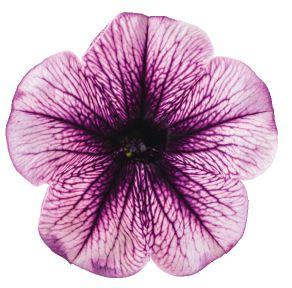


Find out which trialled varieties survived long stretches of high temperatures, and what exciting changes are in store for 2021.
BY MELHEM SAWAYA
COVID-19 did not affect our trials, but we were forced to hold the open house over a longer period of time.
Visitors had to register in advance to limit the number of people visiting per day, which turned out to be a much better experience for the attendees because they were able to concentrate on the trials rather than visit with friends and industry acquaintances. Counting the visitors through the different days, the numbers surpassed other years and most, if not all, were from Canada. All in all, we learned from the situation forced upon us.
The other semi-expected surprise was the charity plant sale, which we have held each year for the past 20 years. This year, the total amount raised was double compared to our best previous years. Yes, plants were in demand.
This was the 20th year for the trials, and many cultivars have come through since. Some have been in production for 20 plus years and are still going strong; others have not made it past one or two seasons. Granted, even though many of the cultivars have kept the same names, they have gone through many improvements over the years. By improving minor characteristics to ensure consumer satisfaction, breeders are producing winning cultivars.
Through my 42 years in the horticulture business working with breeders, growers, buyers, and consumers, I have learned what it takes to create a successful cultivar that can stand the test of time.
These include:
• Source starting material: availability; delivery; quality; per cent germination/propagation; pest-free
• Point of purchase: presentation; shelf-life; in-store abuse; ease of care; consumer’s first impression
• Trial garden performance: True to family/series performance (similar habit); plant habit; longevity in appearance; plant body (foliage health and habit); flower power performance (length and regeneration); rain recovery time; drought tolerance; deadheading requirement; garden appeal from 1 metre and from 10 metres; disease and insect resistance; fragrance; colour appeal
Taking all these factors into consideration, the Sawaya Gardens’ next phase is to:

The Sawaya Garden Trials’ open house will be making some changes in 2021, tracking other factors that contribute to a variety’s success.
Every season, I share some cultivars that performed well through the trialling period, but come next season, some of them are never mentioned again while others are mentioned over and over. This is because there are other factors that make a successful, lasting variety.
For the past 20 years, the Sawaya Garden Trials have concentrated on garden performance, which is extremely important. However, starting next year, we will be tracking other factors that make a cultivar successful in the long run.
• Evaluate all participating varieties using a numbered grading scale.
• Work with breeders on variety selection by trialing potential market introductions using the parameters mentioned before.
• Establish a production cookbook for each new introduction, created for growers.
• Conduct market testing on a small scale.


James Darrow
Jolly Farmer, Northampton, New Brunswick
“We produce about 100 million beautiful young plants for customers in the U.S. and Canada. Seeding begins in November when the days are very short, which is why we use supplemental lighting. After considerable research we experimented with Philips LED toplighting. The results—more compact growth, better root development, and a significant reduction in energy costs—were quite exciting. For the 2018 growing season, we replaced even more HPS with Philips LEDs toplighting. Our customers rely on us to provide quality product and Philips LEDs have helped us in a tremendous way.”





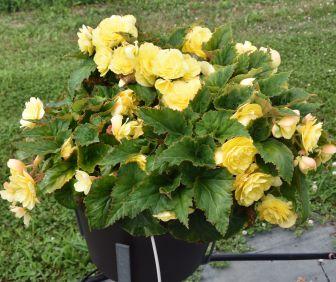

This will accomplish the following:
• Breeders will not have to spend a large amount of capital on varieties that will not make it past one or two years.
• Growers will not have to grow a variety that does not pass the aforementioned criteria. This will avoid wasted capital and allow better use of greenhouse space for tested varieties.
• Buyers will not be tempted to order an exclusive variety that either i) the grower does not produce efficiently or ii) does not have confirmed consumer appeal.
• The consumer will buy a variety that they will likely enjoy, rather than be disappointed by plant performance and be turned away from buying plants completely.
In addition, Sawaya Gardens will open its doors to the public through educational tours, so we can equip consumers with practical knowledge of variety choices and knowledge of plant care.
To accomplish all this, the trial site will be moving to a new location. A greenhouse structure is being built to help answer as many questions as needed by the horticulture industry.
Any suggestions for trial set-up, communication of information, or other topics are all welcome.
VARIETY HIGHLIGHTS: PART 1
Here are some varieties that I’d like to share with you from this year’s trials. These are by no means the only great performers from the trials, but due to limited space, 24 varieties are being shared in this issue with more to come.
This year’s weather has to be one of the hardest I’ve seen on plants. Things got off to a cold start, then came a long stretch of temperatures in the mid-30’s and winds that knocked over many plants more than once. The plants that survived it all were excellent performers.

[1] Achillea millefolium Summer Drift is an excellent garden performer that is covered with masses of white blooms. A perennial for zones 5 to 8. Great in combinations, it could take the place of Bacopa with its excellent heat tolerance. No vernalization needed; firstyear flowering.
[2] Ageratum Ariella Blue is a fairly compact plant with masses of beautiful blue-coloured blooms that last for a long time without browning. Excellent in gallons for planting landscapes or large patio pots. Easy to grow with flowers that are disease-resistant, even with overhead watering.
[3] Angelonia Serena Blue Improved is one colour of the Serena Angelonia series that flowers all season long without any deadheading, making it an excellent choice for landscape gardens, in large patio pots or in mixes as we will see later on. It is not heat-tolerant, but it is heatloving, and it thrives in full sun with high temperatures.
[4] Aptenia Mezoo Trailing Red was a favourite among trial visitors. From the waxy variegated leaves emerge tiny red flowers later in the season. It can adjust to variable weather conditions but excels in high light and high temperatures. Great in large baskets and in combinations.
[5] Artemisia glacialis (Gletscherraute). Silvery smooth, feathery trailing leaves beg to be used in combinations, making them stand out. Excellent garden performance gets better with age. Great in combinations or in large hanging baskets.
[6] Begonia x Benariensis Big White Green Leaf. At last, a large white begonia to complement the other colours. Big White is vigorous with sturdy stems that stood up to the extremely high winds in our trials. A natural for large patio pots and a superb landscape item.
[7] Begonia x Tuberhybrida Nonstop Joy Yellow has a semicascading habit with bright flowers that

can survive full sun when adequately watered and great in the shade. Because of the semi-cascading habit, it’s excellent in combinations that need to be grown in shaded places.
[8] Begonia I’CONIA Bacio Orange and [9] Begonia I’CONIA Miss Malibu are two of the Boliviensis begonias that are great in the shade but excel in full sun. Double, long-lasting flowers are excellent at regenerating new blooms throughout the whole season. Time to slow down on the Rieger begonias and take on the vast varieties of Boliviensis begonias either alone or in combinations.
[10] Begonia Gryphon is a begonia that stands out for its upright mosaic foliage; a classy show that can go indoors or outdoors in shade or sun. Gryphon is great to grow in gallons meant for landscapes or even large patio pots where a pair can make any entrance look great. Easy care, drought-tolerant, no maintenance, Gryphon gets better throughout the whole summer and continues to thrive indoors.
[11] Bidens Popstar Red Bicolor is built on its extremely compact, but large flower-producing cousin, Yellow Popstar. Heat-tolerant masses of bicolour flowers last much longer in hot conditions compared to other Bidens. Excellent in quarts for landscapes or large patio pots, as well as combinations.
[12] Caladium Heart to Heart Chinook is one variety of caladium reintroduced to the Canadian market. If you want the colours of the caladium foliage to shine, plants should be sold at a young age to successfully acclimatize to the bright sun. Caladium can be grown in shaded areas. Absolutely great in landscape or large patio pots, or can be tried with upgraded mixes.
[13] Calibrachoa Chameleon Double Desert Rose (Trailing) Thousands of little colour-changing roses produce an incredible show that excels over many other varieties. Long lasting




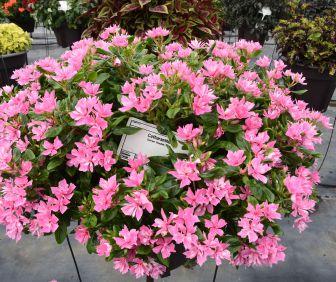
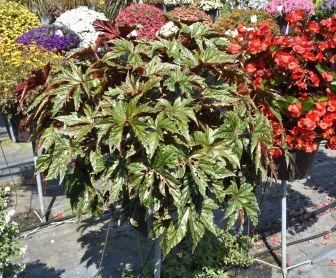





blooms with no deadheading needed, this variety thrives in the heat even if it can be produced at cool temperatures in the greenhouse. A favourite for large patio pots or large upgraded hanging baskets.
[14] Calibrachoa Kabloom
Coral is a seed calibrachoa which has many advantages over vegetative: no shipment shock, lower chances of virus transmission, and having seed on hand that is ready to sow. An excellent garden performer all through the season, the series has four main colours and a star shaped one. Can be used in 4” pots to large containers. If grown in a 4”, it needs one pinch to encourage branching at an early stage, otherwise it grows straight

up before it branches. Historically, one drawback has been its poor germination, but maybe this will be fixed for the next season.
[15] Calibrachoa MiniFamous Neo
Double Lemon is one colour of the double Mini Famous calibrachoa series that has excellent garden performance, excellent flower power, and no need for deadheading. Rain does not have any negative effect on it, and on the contrary, good rain will edge the pH down to a moderately acidic soil loved by calibrachoa. Excellent in upgraded large containers. This variety loves the heat but cooler weather makes the blooms somewhat larger.
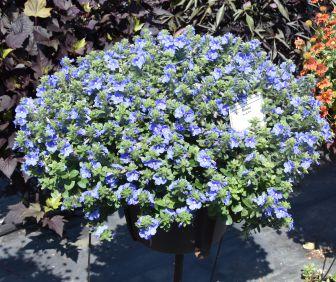
[16] Canna Cannova Rose is one colour in the Cannova series which is the most significant introduction since impatiens. Easy to produce, no viruses, and very versatile for use whether in landscape, in large containers or as a center plant in combinations. Cannas do not like high EC’s on the leaves and like to stay moist all the time. They can be enjoyed all through the summer, then stored in a cool place indoors to be forced again next year.
[17] Catharanthus Soiree Double Pink is new to our trials. It is a vegetative vinca with double flowers that love the heat. Rain has a positive effect on it by dropping the pH. Offers an


Maureno
• High yielding
• Uniform fruit shape and quality
• Fast coloring
• High resistance: TM:0-3

Florate (E23B.0308)
• High yielding
• Uniform fruit shape
• Consistent quality
• Early season production
• High resistance: TM:0-3

• High yielding
• E xcellent fruit quality
• Easy setting
• Fast coloring
• High resistance: TM:0-3
• Intermediate resistance: TSWV:0

excellent show all season long with no deadheading needed. Good for combinations, patio pots and landscapes.
[18] Coreopsis Hybrid Desert Coral is one of the better Coreopsis on the market. Desert Coral has a unique fall colour, making it great for fall sales either alone, as it is a perennial, or in combinations. Long-lasting flowers in addition to strong flower rejuvenation make it one of the best garden performers past frost.
[19] Dahlia-XXL Hidalgo is one cultivar in a vigorous series of dahlias known for their large flowers. Like all dahlias, Hidalgo performs better planted

do not become overheated, a problem that is the kiss of death for dahlias. Surprisingly, many of the dahlias in our trials did fairly well even though we grew them in pots placed on stands, but most of the dahlias that we received were young and tubers had not yet formed, which gave the plants a better chance at surviving the heat.
[20] Euphorbia Zeus Red is a compact euphorbia that has large flowers and can tolerate our hot summers. Bred for indoor use, we tried them outdoors and they performed well in full sun without any special treatment. A novelty to try for outdoor use.
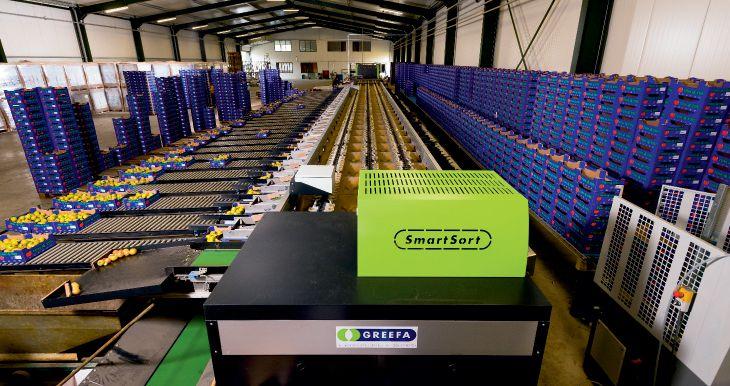

a pure blue colour that is not often found in garden plants. This variety flowered early in the season and held the flowers for an exceptionally long time as new ones formed. An excellent garden performer with no deadheading needed. Good for late spring sales in an upgraded container.
[22] Gaillardia Spintop Red
Starburst is a first-year flowering perennial without any vernalization needed. Increase your productivity with these first-year flowering perennials by extending your spring program. It offers excellent colour that lasts the whole season with minimal deadheading. Red Starburst is great in gallons for landscapes or large containers to plant at the end of summer, or in combinations for fall sales.
[23] Geranium Zonal Sunrise Salmon Light. I picked this as an example of a variety characteristic of light salmon geraniums. Many geraniums of the same colour will have similar habits across different series. I like the characteristics on Sunrise Salmon – strong flower stems with zoning leaves and great flower power.



[24] Geranium Brocade Salmon Night is one colour in the Brocade series which can be grown just for its foliage, but along with the great foliage come masses of flowers that regenerate fast. Great in large hanging baskets and in combinations.
This is the first of a two-part series covering the Sawaya Garden Trials. Just remember what we always say: promising new varieties are there for you to try, not for making big programs with. If all goes well, then plan on larger programs for the next season. It will also be time to cancel some of the unprofitable programs.
Melhem Sawaya of Focus Greenhouse Management is a consultant and research coordinator to the horticultural industry. Contact him at mel@ focusgreenhousemanagement.com.



How artificial lights affect arthropods in greenhouse and indoor growing environments.
BY DR. ROSE LABBÉ AND CARA MCCREARY
It is well-known that artificial lights can significantly improve crop production. Despite this, little research to date has examined how new light environments impact greenhouse crop protection – both the good bugs and the bad. We know that light impacts arthropods (insects and mites), such as when mayflies are drawn to streetlights, and moths to flames. But how important is it really to greenhouse pest management?
This is one of the big questions that has driven our research at the Harrow Research and Development Centre (HRDC) over the past few years. We asked ourselves: How does light quality, quantity and daily duration affect the arthropods we find in the greenhouse? More importantly, how does the light environment affect their populations and impact pest management? As many growers currently using lights would know, the light environment is
ABOVE
so important that it can sometimes tip the balance between a successful and a failed pest management program. Many questions remain: which biological control agents are best applied in various seasonal and light environments, and how can we optimize the light environment to improve their performance while minimizing that of pests?
DIFFERENT WAYS OF SEEING LIGHT
To better understand how lights affect arthropods in greenhouse and indoor production systems, it is useful to consider how their visual and photoreceptor systems differ from those of humans or plants. For instance, plants are highly sensitive to blue and red light, which is why a dual LED light combination is often used, appearing as purple emanations onto greenhouse crops. Plants absorb this energy readily, using it to build plant cells, stems, roots and fruits.





In contrast, the vision of most insects is dictated by two types of visual pigment receptors in their eyes. This is known as bichromatic vision. One pigment receptor absorbs green and yellow light, while the other pigment receptor absorbs blue and ultraviolet (UV) light (Figure 2). Thus, most insect species we encounter in the greenhouse are not sensitive to red light.
Additionally, insects differ from plants and humans in their acute sensitivity to UV light, which mediates multiple aspects of their biology, including their sense of orientation. For instance, many insects, including bumblebees (who actually have trichromatic vision), will specifically move towards sources of UV light, using it



to find suitable food sources such as flower nectar.
In addition to the clear impacts that light quality (i.e. wavelength/colour) has on arthropod behaviour, there are more subtle, but equally important aspects of the light environment that affect how pests and beneficial arthropod populations change over time. Such impacts can be further influenced by the geographic origin of an insect or mite species.
Take, for instance, insects native to Canada, such as thrips predator Orius insidiosus. They are adapted to freezing temperatures and short days in the winter (low light quantity and quality; short photoperiod)




Over the course of the earth’s yearly journey around the sun, the quantity and quality of natural light available for growing crops can vary greatly. Located at northern latitudes, crops in Canada often experience less than half the quantity of solar radiation in the depth of winter compared to the peak of summer. This difference has clear implications for greenhouse crop production. Along with increasing vertical farm acreage, this is one of the main drivers in today’s use of artificial high-pressure sodium (HPS) and light emitting diode (LED) lights for greenhouse and indoor crop production.






Botanicoir Agent in Canada Kalahari Connections Canada Ltd. www.kalahariconnections.com













Because of the 23.5° tilt of the earth’s rotational axis relative to the plane of the earth’s orbit around the sun, those of us in southern Canada, located around the 42° parallel, receive less than half the amount of solar radiation in the winter relative to the summer.












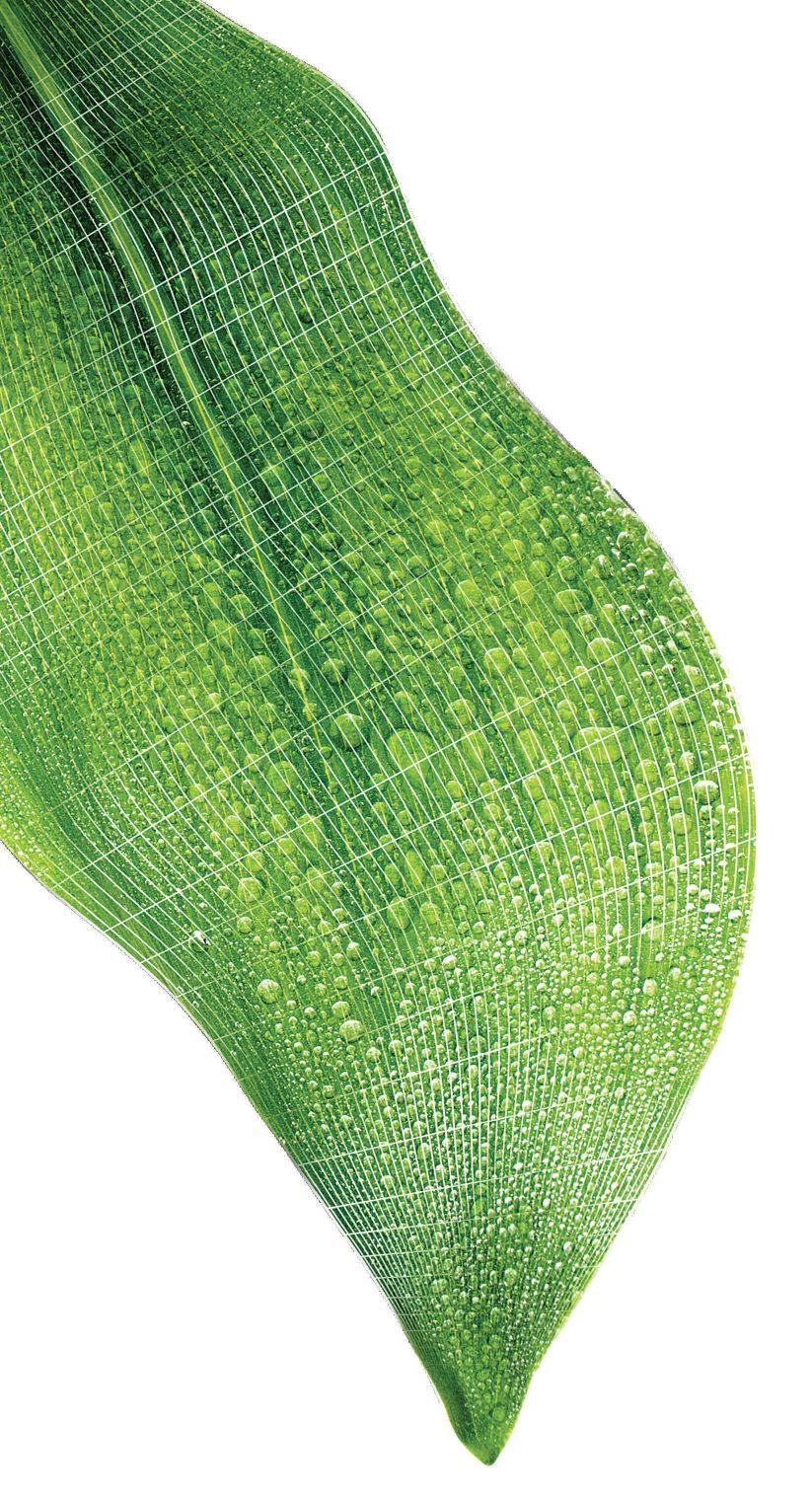











Figure 2. A simplified representation of bichromatic insect light sensitivity relative to humans and plants. A human’s photosensitivity extends from violet to red light. Plant absorption of light energy peaks for both blue and red light. Humans cannot see UV light (lower wavelengths to the left of the dashed line). In contrast, insects use UV light for navigation among other applications

Figure 3. Orius has its shortest lifespan (longevity) and lowest lifetime fecundity (number of eggs laid per female individual) under summer conditions. It lives longer under low intensity blue or red LED lights and lays more eggs over its lifetime under these conditions compared to summer. Female fecundity is also relatively low under simulated winter conditions as well as high intensity blue LED light.
and to warm, long days in the summer (high light quantity and quality; long photoperiod). Native insects can also perceive slight changes in day length and temperature over time in a process called acclimation, which will gradually reduce their rates of pest consumption, egg laying and development to prepare for winter survival. This is an important factor in greenhouse biological control programs during Canadian winters, as diapausing (or winter-dormant) predators and parasitoids may not be
suitable for use against non-diapausing pest populations.
Diapause in arthropods is a key reason for using commercial biological control agents originating from places where winter is virtually nonexistent. For instance, the predatory mite Amblyseius swirskii was originally sourced from the Mediterranean basin, and in Canada, will continue to feed and reproduce on greenhouse crops through the winter. In such locations, arthropods do not experience cold winters and will
continue to reproduce even if the light environment starts deteriorating in the fall. In contrast, the native predatory mite Neoseiulus cucumeris, may be more sensitive to winter conditions and would reduce its population growth rate so that it can focus on surviving the winter. To address this challenge, certain biocontrol companies today source native agent powerhouses such as N. cucumeris, or predators such as Dicyphus hesperus, from southerly locations so they can avoid the diapause response in greenhouse production environments.
Despite this, it’s clear that even beneficial arthropods from southerly origins can also dip in effectiveness during the winter. In many instances, this can be compensated for by adjusting the light environment, an element that ongoing research is helping us better understand.
Our research examined the responses of multiple arthropod species to different light and temperature environments, generating some interesting results.
In recent work, we studied the effects of various simulated seasonal and lighting conditions on Orius insidiosus, a notoriously difficult predator to establish on greenhouse crops in the winter. Interestingly, while Orius initially exhibited a rapid and intense reproductive rate under summer conditions, the cost was a shorter overall lifespan and fewer eggs laid compared to other environmental conditions. Whether using low intensity blue or red LEDs, females laid considerably more eggs over their lifetimes under cooler and longer day lengths (20 hours) in supplementally lit environments, and they lived longer compared to females under simulated summer conditions (Figure 3). Females laid an average of 118 eggs under low intensity blue LEDs, almost three times the amount laid in summer conditions. These findings suggest that the use of artificial lights in crop production might improve the survival and establishment of Orius on protected crops grown in the winter. Using a similar experimental approach, we also assessed the response of the native generalist predator Dicyphus hesperus, to simulated light environments. We first showed a







remarkable difference in lifespans between male and female predators (Figure 4), with males outliving females under nearly all environmental conditions tested. Regarding the effects of light environments on predator
lifespan, we observed that, as a species, Dicyphus fared best under high intensity red LED light, and worst under summer conditions (Figure 4). Interestingly, HPS also seemed beneficial to female longevity, a result which might be
explained by the considerably broader, and possibly beneficial, spectral range of light emitted from this source.
Similar to Orius, the lowest number of eggs laid by Dicyphus over the course of a lifetime was observed under summer conditions (Figure 5). Once again, while the predator may lay many eggs and rapidly in the summer, this comes at the cost of a shorter lifespan. When we think about how this might impact greenhouse biocontrol, clearly warmer is not always better, particularly if we are trying to achieve a steady rate of increase in predator population over time.
In addition to these studies with predatory bugs, it is also clear that phytoseiids (predatory mites that feed on thrips and other insect and mite species), such as Amblyseius swirskii, are impacted by the light environment. Some similar trends for these predators include the possibility that HPS and high intensity red LED lights provide the fastest developmental times, like those observed under summer conditions. In contrast, mites placed under the



Table 1. Environmental conditions used for each lighting treatment. Note the 8h lighting for winter and HPS conditions, 16h lighting for summer conditions, and 20h lighting for red and blue treatments.

Figure 5. Over their lifetimes, female Dicyphus hesperus lay more eggs under low intensity blue LED light and the fewest under summer conditions.
remaining environmental test conditions displayed slower development overall. Other ongoing work at the HRDC, relevant to parasitoids of whitefly and predators of western flower thrips, will help elucidate how supplemental light can influence the big picture of greenhouse arthropod population dynamics. This foundational work will be vital to continuing the study of these interactions under commercial growing environments being devised for optimized plant production.
Some conclusions that we can draw from our work to date are quite surprising. While many of the insects being studied are not capable of seeing red light, clearly red LED light is still affecting them, often in a positive way. Could it be that these insects are happier on plants that receive lots of readily absorbed red light energy? We think so and hope to
evaluate this in future work.
We also noticed a trend with high intensity blue LED light. As with UV light, which is often used to kill pathogens in greenhouse irrigation systems or on the surfaces of objects, high intensity blue light can also be detrimental for many insects. (Note how close blue light is located next to UV light on the light spectrum in Figure 2). A notable study on the fruit fly, Drosophila melanogaster, showed that the short wavelength of blue light, which confers a higher level of energy per photon relative to lights with longer wavelengths, caused mortality to eggs, larvae, pupa and adult flies (Hori et al., 2014). Does this mean that too much blue light is bad for insects? Possibly. Just like UV light, it seems that blue light can be beneficial when applied at low intensities, but detrimental at high intensities or over prolonged exposure. That said, the impacts of blue light are likely to be more
pronounced for those immobile life stages of arthropods which cannot fly or crawl away from an undesirable light source. In addition to the lights we currently work with, there are now many other types of lights available for use in greenhouse and indoor production systems, including ceramic metal halide lighting, as well as LED and HPS lights with new spectral outputs. Each of these light sources and their combinations may impact arthropods in new and unexpected ways. With a well-recognized gap in local food supply during the winter, the current market for grow lights is large and their rate of commercial implementation has never been greater. Providing distinct light spectral outputs, these new lighting regimes could have considerable impacts on biological control agents and pests in production systems. Many types of lights could also fundamentally affect how arthropods interact with their growing environment when used year-round, as seen with the use of UV lights to trap nocturnal moths. As lighting regimes are being optimized for plant production, it is equally important to consider impacts on pathogens, both of which may additionally influence insect or mite populations. These early findings only begin to address existing knowledge gaps, but do help in directing future research. Ultimately, we hope this knowledge will lead to the application of optimized light environments, both for crop production and crop protection.
Hori, M., Shibuya, K., Sato, M. et al. Lethal effects of short-wavelength visible light on insects. Sci Rep 4, 7383 (2014). https://doi. org/10.1038/srep07383
ACKNOWLEDGEMENTS
This work was generously funded by Agri-Innovation project AIP-029 through Ontario Greenhouse Vegetable Growers, in collaboration with Agriculture and AgriFood Canada.
Rose Labbé, PhD, is a greenhouse entomologist at Agriculture and AgriFood Canada, roselyne.labbe@canada.ca. Cara McCreary, MSc., is the greenhouse vegetable IPM specialist at the Ontario Ministry of Agriculture Food and Rural Affairs, cara.mccreary@ontario.ca. Both are based out of the Harrow Research and Development Centre in Ontario.



Rijk Zwaan has been active in North America for over 25 years with continous R&D investment and dedicated crop specialists. Since 2013, we have used our demonstration greenhouse in Leamington, Ontario. This local approach enables us to test our newest varieties under local climate and market conditions. We look forward to discussing your variety choices with you!


Winmar RZ
Long English Cucumber
• True winter variety, strong in low light periods
• Easily makes the required fruit length
• Fruit quality is premium level
• Easy to grow, open winter variety
Cervello RZ
Long English Cucumber
• Variety for later winter planting
• Both traditional and high wire
• Nice ribbing and color
• Medium length, uniform, dark and heavy fruit type
• Open and labour friendly crop type
24-HW301 RZ
Long English Cucumber
• Winmar type, true winter variety
• Out first winter variety with CGMMV resistance!
• Medium length fruits
• Less neck in the fruits, with same premium quality as Winmar RZ
• Keeps a better generative balance into the spring period
Breeders share their thoughts on garden vegetable marketing and new recommendations for the Canadian market.
BY GRETA CHIU
It’s no secret that vegetable gardening was a hit among many Canadian households this year. But for bedding plant growers or garden centres looking to add vegetables to their repertoire, experts are stressing the importance of assessing the target consumer market before taking on new edible offerings.
For instance, different tomatoes serve different purposes and each offers distinctive differences in flavour and texture, explains Jeannine Bogard, business lead on home and garden vegetables for Syngenta Flowers. Rather than choosing a variety based on its ability to fill a one-gallon pot, Bogard suggests considering the needs of the end consumer. “Are they looking for the prettiest plant or something that fits into their cooking styles?”
Garden vegetable transplants are often marketed in the same manner as flowers, focusing on size, shape and colour without mentioning taste or use. It’s this ‘connection to the belly’ that’s missing, says Bogard. Serving a purpose different from flowers, the esthetics tend to be a little less important. “With vegetables, there’s a lot more tolerance than there is for a geranium, for example,” says Dustin Morton, sales representative for Ball Seed based in Alberta. Consumer expectations differ dramatically between a plant purchased strictly for looks versus another purchased for consumption. “It’s all function, no form,” he says of vegetables, and they will likely be purchased if the end consumer demands it. “It all depends on your market.”
would best fill a gap in existing offerings or best fit their customers’ needs? Breeders identified some of their top new edibles for Canada, slated for release in 2021.
[1] Namib Roma tomato
Producing clusters of five to six uniform, firm fruit in an attractive red colour, the flavour is described as sweet and rich, best for sauces, snacking, salsas and salads. “Keeping that

Marketing garden vegetables isn’t quite the same as flowers. It depends on the interests of the target market, as well as their culinary inclinations.
Whether the main driving force is to improve food accessibility, avoid a stressful trip to the grocery store, or tackle a fulfilling outdoor project with physical and mental health benefits, garden edibles are expected to continue trending upwards. The question is, are they right for the grower or garden centre’s immediate market? And if so, which varieties
connection to the belly, most folks think of using Roma types for sauces or salsas – I prefer to grill them,” says Bogard. “Cut them in half lengthwise, give a light squeeze to remove the seeds. Drizzle with olive oil and grill on low heat. Serve cold with a spritz of balsamic and chopped basil. Yum!” The vigorous plant














matures early to mid-season, in about 73 days from transplant, and reaches a height of 36”.
[2] Bayonet bell pepper
This blocky bell pepper is a re-release from Syngenta. Known for its high productivity under cool and drought conditions, Bayonet stands out with its continuously fruiting nature. As Bogard explains, regular bell peppers typically produce three groups of fruit on sequential nodes before the plants are done for the season. “But with Bayonet, the peppers are formed like whorls off

This new lavender-pink variety 1 2 3
the stem, so you have this continuous fruit set unlike the regular pepper…. This one is constantly producing as the plant matures.” The mid-sized 3” x 3.5” fruit turns red, taking about 70 days to mature from transplant.
[3] Snak Hero snack pea
With its elongated 4”-long shape, this All-America Selections winner may look like a green bean but is actually a snap pea. While snap peas may be traditionally sold as packs, a suitable alternative is the hanging basket, particularly for dwarfed, short-vine varieties. “That’s the perfect
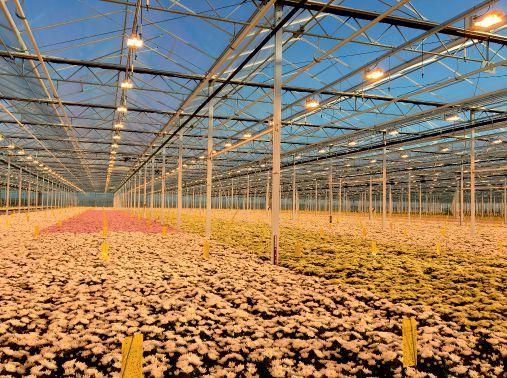



environment for a snap pea because… they don’t like to have wet feet,” Bogard explains. With vines reaching 18” to 24” in length, she recommends selling them at retail when the vines measure three to four inches, then allowing them to grow out on the consumer porch for snacking and cooking. A cooler season crop, Snak Hero is ideal for early spring or fall season sales. Bogard has even trialed them as a mix with edible, trailing pansies and seen good results.
[4] Depurple cauliflower



SUNSHINE® MIX #1, #4 and #5 are our most versatile formulations that expert growers choose for the production of a wide variety of crops including cell packs, large patio pots, and fabric containers.
All three are excellent for propagating cuttings in both indoor and outdoor growing situations and where increased drainage is a priority.

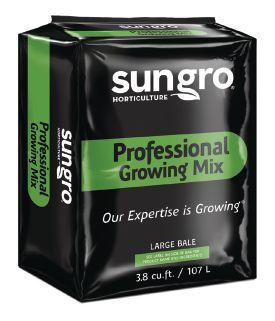








complements Syngenta’s existing cauliflower offerings, including deep purple ‘Graffiti,’ pastel orange ‘Flame Star,’ and traditional white ‘Steady.’ People tend to forget about Brassicas, says Bogard, who recommends timing them with pansies, whether for production or for retail sales. With their semi-frosttolerant nature, Brassicas can be started with other young plants for spring gardening. But, she says, there’s a second retail season mid-summer. Brassicas sold at this time will mature in consumer gardens just in time for Fall, making it an ideal shoulder-season item once the peppers are sold out.
[5] Redarling Brussels sprouts
The red-purple colour of this Brussels sprouts variety is undeniably eyecatching. As most consumers are unfamiliar with how Brussels sprouts are cultivated, it can be fun to watch grow and harvest in the garden, maturing in roughly 140 days from transplant. “It has a really nice flavour to it,” says Bogard. Reaching a height of 31.5”, the stalk is relatively short for Brussels sprouts but ideal for home gardens. Almost all of her Brussels sprouts are sold into Canada, says


Bogard. “The climate, particularly in Ontario, is perfect.”
PANAMERICAN SEED
[6] Sweet Thang cabbage (Burpee)
A Portuguese cabbage, this non-heading variety is similar in habit to collard greens or kale. Measuring 2-16” tall by 10-12” wide, Sweet Thang is an ideal size for containers and balconies – areas typically too small for larger greens. “It hits that increasing trend of container balcony gardening, especially this year with everyone wanting to grow their own edibles,” says Morton. While Brassicas aren’t known for tantalizing the taste buds, this variety promises ‘sweet tasting white veins on an attractive dark green leaf.’ Because of its non-heading nature, Morton recommends that growers let it develop a bit more to show customers how it looks at retail. Retailers could use this opportunity to educate new gardeners about pests like the cabbage moth and how to protect against them
[7] Asian Delite eggplant
(PanAmerican Seed)
Producing non-bitter, elongated eggplants with a shiny bright-purple exterior, this robust variety stands up on its own at just 2.5-3’ high. Smaller than grocery store offerings, baby fruit sizes measure 5-7” long by 1” wide, while larger fruits measure 9-12” long by 1.5” wide. With just 50-55 days to maturity, Morton says


the shorter growing season is a good option for Albertan growers. He suggests retailing in one- to two-gallon pots, with at least one flower in bloom.
[8] Emerald Towers basil (PanAmerican Seed)
Though released last year, Morton says Emerald Towers remains one of his favourite edible varieties and deserves more attention than it has received. “It is a huge basil…up to two to three feet tall and really late to flower.” Though this Genovese basil is said to flower up to eight weeks later than standard varieties, Morton’s found that the variety works best in containers compared to being planted in-ground as it can take a little more time to develop in Alberta. His customers have really enjoyed its flavour and the ‘wow’ factor it provides in an otherwise monotonous-looking vegetable section at retail. He suggests letting the plants reach 1.5-2.5’. “The basil has to be a nice big size, because otherwise it just looks like a regular basil. It has to be seen to be believed.” Excellent for containers, particularly on a warm patio.
[9] Autumn Frost squash (PanAmerican Seed)
The ribbed, round winter squash produced from this variety measures 5-7” long by 5-6” wide. Though similar in colour to a butternut squash, the squatter fruit from Autumn Frost is said to be richer in flavour









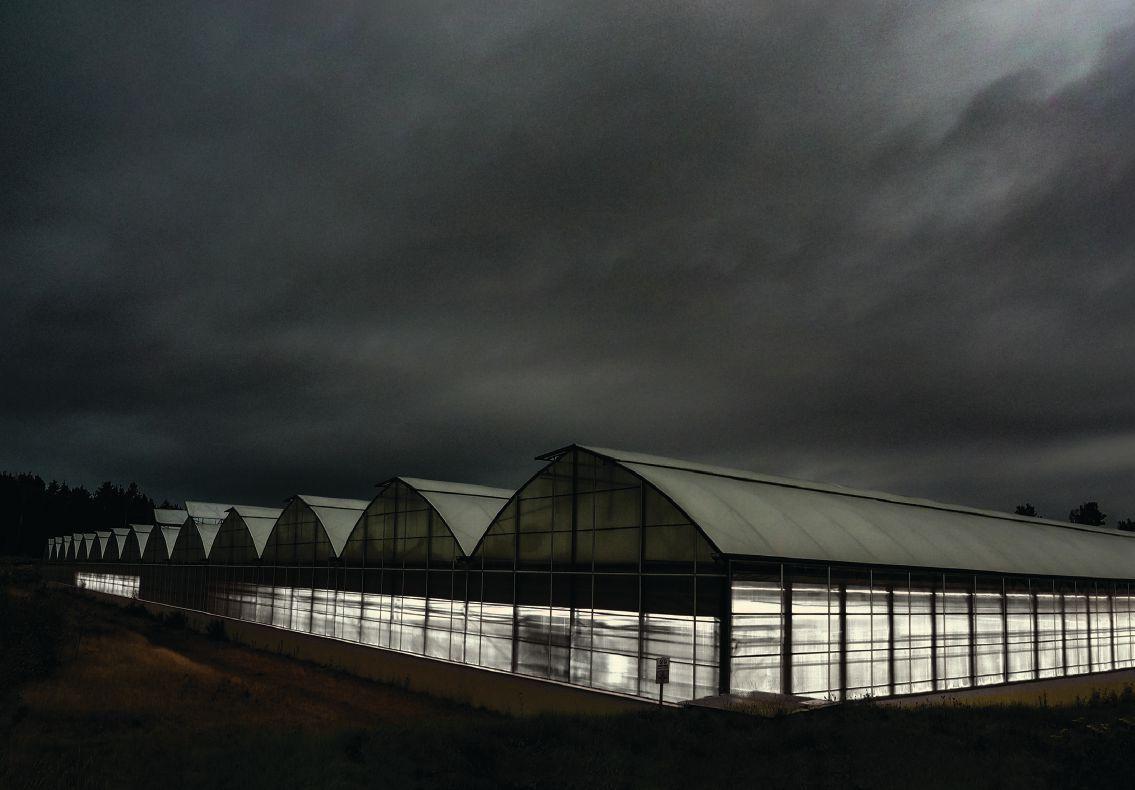













and lasts on the shelf for up to four months after maturity. “It’s a medium vine – a fun option for consumers with any type of growing space [in the ground],” says Morton. For retail, Morton recommends having a couple of true leaves and ensuring that it’s well-rooted. “There’s nothing worse than seeing an overgrown squash being transplanted.”
[10] Siam tomato (PanAmerican Seed)
Part of the Kitchen Minis series acquired by PanAmerican Seed last year, Siam is the first tomato in a lineup of peppers and its small stature fits the bill. Measuring 7-9” tall by 10-12” wide, the compact

determinate variety produces small, bright red fruit measuring 0.5-1” in diameter. “They are a cherry tomato but it’s intended to grow on a sunny windowsill or a counter in your apartment or house. It’s hitting on the edible trend, but it’s for people who want to be plant parents or who don’t have a balcony for growing [edibles].” Targeting a different consumer, Morton says Siam is an ideal option for year-round garden centres and wholesalers with grocery store clientele, appealing to end-of-season tomato lovers from October to January. He recommends retailing in 5-6.5” pots, with some fruit visible and close to ripening.











[11] Berried Treasure strawberry –White [A] and Pink [B]
First released two years ago, the original Berried Treasure Red won a number of awards in trials across North America including one for ‘Top Performer’ at the University of Guelph. For 2021, Proven Winners is releasing two additional colours in pink and white. Both attractive and functional, this ever-bearing series offers luscious red strawberries among semi-double pink or white blooms. Runners can develop over time, adding a trailing element. Hardy to zone 4a, 1216” tall by 18-24” spread.


























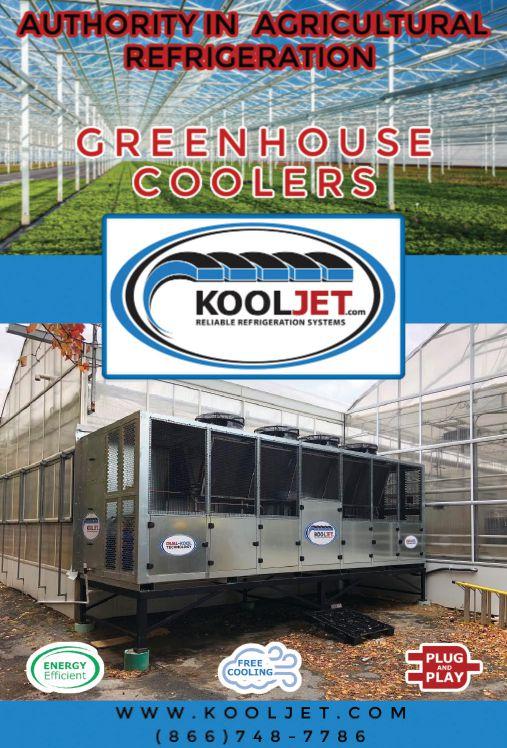

























Growers know that when it comes to controlling and monitoring a production environment, a simple, flexible, sustainable control system is crucial. This is why you can depend on Reliable Controls. Our nationwide network of factory-certified Authorized Dealers will help you design, install, and commission a comprehensive control system paired with an intuitive, custom-tailored graphical interface. Take command of your precisely controlled environment. Generate tracking reports and analytics. Reduce your carbon footprint while improving productivity, quality, and serviceability.
To learn more about this cost-effective, Canadian-made solution, please contact a Reliable Controls
Authorized Dealer near you.
Eastern Canada: 647.982.7412 Western Canada: 403.561.4148
A subtropical crop that continues its climb in popularity, locally produced sweet potato slips in greenhouses could fill a rising demand.
BY MICHAEL YOUNG
Sweet potatoes have risen in popularity among Canadian consumers in recent years. Ontario production meets just over 50 per cent of the province’s demand for these nutritious tubers. A recent report by the Greenbelt Foundation explains how local production could expand to meet 79 per cent of provincial consumption.
According to Plant the Seeds: Opportunities to Grow Southern Ontario’s Fruit and Vegetable Sector report, Ontario produces slightly more than 53,000 tonnes of sweet potatoes annually. Ontario retailers carry local sweet potatoes throughout the harvest and post-harvest season and then switch to imported produce for the rest of the year. Currently, imports from the United States dominate the market during the off-season and provide stiff competition even during Ontario’s harvest season.
So, how is the US so competitive in this market?
With lots of suitable land and a long growing season in the southern states, the US is able to grow a significant excess of sweet potatoes—just over 3.0 billion pounds per year. This excess product is then exported to Canada, as well as to the United Kingdom and the Netherlands, at a competitive price-point. According to the report, in October 2019, the average Canadian import price on US sweet potatoes was $0.46/pound, whereas Canadian sweet potatoes averaged at over $0.50/pound on the market.
One immediate challenge for Canadian growers is their reliance on the US for slips.
Sweet potatoes are a sub-tropical crop and so their slips must be planted in the spring in order to bring crops to maturity by the end of the fall. These slips are primarily grown in the southern US, then shipped into Ontario. Import charges associated with this adds a cost for Ontario growers not experienced by US growers. But this also presents an opportunity for Ontario greenhouse operators who could undertake growing local slips, generating new revenue, and ultimately leading to less reliance on imports from south of the border.
There are a number of other factors that limit the expansion of sweet potatoes in Ontario.
Growers must be able to profitably grow, store, and ship sweet potatoes into distribution centres across the province, while maintaining prices near US import values. Given that the cost structure for Ontario sweet potatoes is higher because of the northerly production location and the need for imported slips, competitive pricing is a challenge. This is compounded by higher
labour costs in Ontario and an inability to access certain crop protection materials that would result in higher yields and less product downgrade. Costs for producing sweet potatoes could be lowered by undertaking cultivar selection and/or a plant-breeding program focused on higher yields or a shorter growing season.
Any expansion plan also needs to consider the surplus of US sweet potatoes on the market.
Ontario’s dependency on the US export market means that established marketers of US sweet potatoes will likely use price to maintain market share north of the border. It is also important to note that significant expansion of Ontario sweet potato production may be disruptive to the broader market and established continental supply chains. Retailers have to commit to supporting Ontario-grown sweet potatoes.

Ontario expansion must be based on agreements with food retailers that commit to stocking additional Ontario sweet potatoes. As well, Ontario sweet potato growers need to be able to offer a critical mass of retail-ready sweet potatoes at a competitive price in order to access more real estate on retail shelves. Greenhouse-grown sweet potato slips could help Ontario growers become more competitive, while creating a new avenue for revenue among greenhouse growers.
Michael Young is the communications advisor for the Greenbelt Foundation.






























BY SKYE DUNCAN STEPHENS, EDWARD J. FLAHERTY, WILLIAM (BILL) N. MACDONALD, and DR. BARRY J. SHELP
Closed subirrigation systems are popular in modern greenhouse floriculture operations for reducing the input of nutrients, especially nitrogen, phosphorus, boron and molybdenum. Nevertheless, the recirculated nutrient solution must be refreshed occasionally and eventually discharged or treated in accordance with applicable environmental legislation. Optimizing nutrient delivery can further reduce fertilizer use over the crop cycle.
Approximately 10 years ago, we began to optimize the subirrigation strategy for delivering macronutrients using chrysanthemum, a common potted ornamental crop in Ontario, as well as Canada, as our plant model. Our objective was to systematically evaluate each of the nutrients essential for plant growth because their unique chemical
properties could differentially influence their ability to be stored and moved throughout the plant in response to varying nutrient supply.
Previously, we demonstrated that the entire nutrient supply for subirrigated chrysanthemums could be removed at the onset of flowering. At the same time, we reduced the supply of nitrogen, phosphorus or sulphur during vegetative growth by 50-75 per cent compared to industry standards and without adversely affecting plant or flower quality. If these trends hold for the remaining macronutrients, that is calcium (Ca) and magnesium (Mg), as well as the micronutrients, our modified delivery strategy would enable the production of plants with a more balanced nutrient status and the formulation of new commercial fertilizers.
ABOVE Figure 1. Market-quality ‘Milton Dark Pink’ and ‘Williamsburg Purple’ chrysanthemums were produced using different Ca and Mg regimens.

Calcium has important roles in cell integrity, flower development and cell signaling. Its low mobility in plants means that it is not redistributed during times of calcium deficiency, and that a constant supply is generally required during plant growth. Magnesium has roles in light absorption, energy production and use, carbon dioxide fixation, carbohydrate transport, and enzyme synthesis. It is highly mobile in plants, so it is effectively redistributed within the plant when supply is limited.
In this study, we were able to reduce the Ca or Mg supply to two modern subirrigated chrysanthemum cultivars during vegetative growth, while removing the entire nutrient supply at the onset of flower growth. This research contributes to the development of our modified delivery practice and further lays the foundation for low-input production.
Pinched, potted chrysanthemums were grown in a peat-perlite mix under greenhouse conditions (January to March 2019) using two cultivars (‘Milton Dark Pink’ and ‘Williamsburg Purple’). The study tested three Ca (170, 85 and 42.5 ppm) or Mg (62, 31 and 15.5 ppm) treatment rates, each replicated in four different areas of the greenhouse. The highest concentrations were equivalent to the levels found for both nutrients in Sonneveld’s solution. Treatments were supplied in an otherwise complete nutrient solution until bud break (i.e., until early flowering), and then replaced with deionized water thereafter.
Immediately prior to removing the nutrient supply, recently-matured leaves were randomly collected from each plant and pooled for analysis of Ca and Mg. Similar to the floricultural practice of using leaf tissue analyses to diagnose nutrient deficiencies, this step was used as a way to monitor and verify deficiency in these nutrients.
Plants were harvested at approximately eight weeks after short days were imposed to induce flowering, and assessed for visual quality and plant/ bloom characteristics. Vegetative characteristics were assessed as shoot height and dry mass. Flower characteristics were assessed as dry mass, number of flowers/ flower buds, bloom diameter and bloom development (from bud formation to fully open blooms).
In the Ca trial, leaf Ca levels at bud break


Lowered levels of calcium and magnesium delivered to ‘Williamsburg Purple’ (above) and ‘Milton Dark Pink’ (below) did not impact flower quality when compared to the highest concentrations tested.

ranged from 1.69 to 0.78% of dry mass, across both cultivars, and significant decreases were found with decreasing Ca supply. However, these levels still fall within the desirable range for Ca laid out by the Ontario Ministry of Agriculture, Food and Rural Affairs (OMAFRA) in Publication 370, which suggests 0.5% to 4.6% Ca concentration in plant dry tissue for chrysanthemum.
There was no effect of Ca treatment on the vegetative and flower features of either cultivar. Regardless of treatment, the flowers were of market quality, and there were no visible signs of Ca deficiency (i.e., death of apical meristems, stunting of shoots, inhibition of flower formation, reduced yield, enhanced senescence) on the flowers, leaves or shoot tips .
In the Mg trial, leaf Mg levels at bud break ranged from 0.54 to 0.30% of dry mass across the Mg treatments, also falling between OMAFRA’s suggested range of 0.1 to 1.5% Mg of plant dry mass. Some of the vegetative and flower characteristics were slightly affected by the decreasing levels supplied, but these changes were inconsistent across the two cultivars. Regardless of treatment, the flowers were of market quality, and there were no visible signs of chlorosis on mature leaves.

Many nutrient formulations are now available for cultivating greenhouse chrysanthemums. Modern commercial examples include Fusion Plant Products 17-5-7 (Plant Products) and Peter’s Professional 17-3-17 (ICL Fertilizers), which contain 31-44 ppm Ca and 28-37 ppm Mg at 285-295 ppm N. More historical nutrient solutions contain much higher Ca and Mg levels. Sonneveld’s solution was developed for flowers and vegetables and has 170 ppm Ca and 62 ppm Mg at 260 ppm N. As our studies on chrysanthemum nutrition began approximately a decade ago, we chose Sonneveld’s solution as the industry standard at the time. In this study, we investigated Ca and Mg levels that covered the approximate range of Ca and Mg levels found in the different nutrient solution formulations described above With no visible effects on flower quality or crop health at the lowest concentrations of Ca and Mg supplied, this strategy reduced approximately 87.5% of Ca and Mg delivered over the crop cycle. Leaf levels of Ca and Mg declined by 30-34% and 2-12%, respectively, but can be considered acceptable based upon the lower limits from guidelines in the extension and scientific literature.
This interpretation is supported by the absence of visible signs of Ca or Mg deficiency, and of inconsistent minor responses in plant and flower quality of the two cultivars. Thus, it can be concluded that chrysanthemum growth was not limited by any of the Ca and Mg regimens used here, regardless of the nutrient’s mobility.
Comparisons of Ca and Mg levels supplied in the nutrient solution to the levels measured in the leaves indicate that the crop was able to use Ca and Mg more efficiently with decreasing supply. Both increased approximately four-fold based on decreasing supply during vegetative growth, and eight-fold based on the delivery of these nutrients over the entire crop cycle, compared to Sonneveld’s solution.
To more closely determine the minimum levels required for attaining maximum yield, lower rates of Ca and Mg, possibly even suboptimal levels, must be investigated. Challenging the plants and monitoring their responses in terms of maintaining growth and quality at near limiting fertilizer rates would go a long way towards addressing the big picture of low-input production.
Acknowledgements: This project is part of the Accelerating Green Plant Innovation for Environmental and Economic Benefit Cluster and is funded by the Canadian Ornamental Horticulture Alliance (COHA-ACHO) and the Government of Canada under the Canadian Agricultural Partnership’s AgriScience Program. Industry partners include AgMedica Bioscience Ltd. (Ont.) and Schenck Farms and Greenhouses (Ont). Thank you to Berger for supplying the potting mix.
For more details, see the article, “Further optimization of macronutrient delivery for subirrigated greenhouse-grown chrysanthemums: Calcium and magnesium”, published in the Canadian Journal of Plant Science (doi. org/10.1139/CJPS-2020-0117).
For more background, see the articles on nitrogen, sulphur and phosphorus reduction for subirrigated chrysanthemums published in the December 2018, July 2019, and March 2020 issues of Greenhouse Canada magazine.
Skye Duncan Stephens is a graduate student, Edward Flaherty is a technician, and Barry Shelp is professor emeritus in the Department of Plant Agriculture at the University of Guelph. Bill MacDonald is professor of Horticulture at Niagara College. For more information, contact Dr. Shelp at 518-824-4120 ext. 53089, or bshelp@uoguelph.ca.
CLASSIFIED RATES: Minimum order $75.00 or 84¢ per word, word ads must be pre-paid. CLASSIFIED DISPLAYS: $72.00 per column inch, or $5.14 per agate line. GENERAL INFORMATION: Payment must accompany order. Copy required by the 1st of the month preceding publication. All advertising copy subject to the approval of the publisher. Send order and remittance to: Classified Dept., Greenhouse Canada, P.O. Box 530, 105 Donly Dr. S., Simcoe, ON N3Y 4N5

GREENHOUSE BUSINESS FOR SALE IN MUSKOKA: Fantastic opportunity to own your own greenhouse business in Muskoka! Owners are retiring and willing to train. The property includes 1,537 sf three (3) bedroom home and two (2) greenhouse with a total of 4,300 sf on a beautifully landscaped property. MLS # 400014390
CALL TODD FOR MORE DETAILS AT 705-644-4527
010/1t/pd
FOR SALE: Garden Centre with Good financials. 12 km from downtown Sudbury, Ontario, a city with a great stable economy. 20,000 sq ft fully equipped retail and growing greenhouses, irrigated nursery area, vehicles, attractive 4 bdr. house, 18 acres land. Room for expansion, Owners seeking to retire, will assist with transition $695,000 azildagreenhouses.com. For more information contact pandovanderkooy@gmail.com or 705-665-5220
10/1t/pd


GARY JONES | Gary.Jones@kpu.ca
I’m going to take a liberty today and venture on a departure from the usual issue theme. So no energy or lighting or rootzone management for me this time. If you haven’t heard (you’ve not been keeping up with your Greenhouse Canada news, have you!), the publication is celebrating 40 years in print, and back in August proudly presented its 25th annual Grower Day (and first fully virtual one – well done Greta by the way!).
I too have a milestone with this being my 150th ‘chapter’ of ‘Inside View’. The first one appeared at the request of then editor, Dave Harrison, back in July 2007, with the theme ‘keeping up with new plants and varieties’.
Clearly, things have changed in those 13 years. How we celebrate, for instance… Remember when we used to get together and have a cold beer while sharing stories of all the great things that we’d experienced? Now we get together separately via computer or phone screens, probably sipping a tea or coffee.
But celebration is something that does us all good, especially in these challenging times. The opening panel speakers of virtual Grower Day were celebrating the industry as the next generation. Jennifer McIntosh, Jette Vanadrichem and Brennan Parkin oozed enthusiasm and commitment typical of young growers, and in their own way they each celebrated what they’re doing and, more importantly, why. More about this in a future ‘Inside View’.
The second panel members were discussing
a discussion on ‘nutrient management for the cannabis curious’.
Many of the ‘on-demand’ presentations outlined, indeed celebrated, innovations and progress in the world of biological control, but there were other diverse presentations including greenhouse strawberries in tower systems, understanding dehumidification, managing data in an age of threats and Dr. Mirza’s all-encompassing presentation on ‘why your plants’ needs should meet your business planning needs’.
Emily Kerr (safety advisor, AgSafe BC) explored mental wellness in our industry, and bravely shared some very personal experiences and basic stats of mental health in Canada. Did you know that ‘in any given year, 1 in 5 people in Canada will experience a mental health problem or illness’ or ‘that by the age of 40, about 50 per cent of the population will have or have had a mental illness’ (which includes, but is not limited to, depression, anxiety, bi-polar disorder or post-traumatic stress). Agriculture (and by extension, horticulture) is particularly stressful since it requires long hours, high commitment, and is exposed to multiple external factors over which one has little or no control. But not to linger on the downside, Emily brought up solutions (‘bringing the issue to light is the hardest but most important step on the path to healing’), and just the fact that she was able to share her story is a big reason to celebrate.
Celebration does us good, especially in these challenging times.
the theme of ‘Moving forward with COVID’, and it was encouraging to hear them commenting on how good a year most of them had experienced, despite the pandemic. To date at least, since we can’t yet say how the year is going to end. Sure, it has been a very difficult year and people have bust a gut to keep up with the demands of changes to the workplace. But as Stan Vander Waal (Rainbow Greenhouses) said, ‘growers (and the industry in general) are a resilient bunch and will keep going’. Resilience, and the way these companies are finding silver linings in the clouds, is surely something to be celebrated.
In the final live session, David Pratt of Emerald Harvest in the US, outlined the quality control needed for the specifics of fertilisers during
Of course, we should not forget to celebrate the ‘Top 4 Under 40’ and ‘Grower of the Year’ winners in this year’s competitions. Let’s raise a glass to each of them and celebrate their achievements.
So, let’s all take time to celebrate with our team - family, peers, colleagues, employees, friends. Stop and smell the roses (or whatever it is you’re growing). Celebration is important, but it needs to be deliberately actioned. Who or what are you going to celebrate this week? Oh, and if you didn’t take part in Grower Day this year, put it on your virtual conferences list for next year. ‘See’ you there.
Gary Jones is a faculty member of the School of Horticulture at Kwantlen Polytechnic University, Langley, BC. He sits on several industry committees and welcomes comments at Gary.Jones@kpu.ca.




THESE ACTIVE INGREDIENTS WORK TOGETHER TO POSITIVELY INFLUENCE PLANTS, FOR HIGH-PERFOMANCE RESULTS.



These high-quality growing media enriched with cutting-edge active ingredients provide ideal growth environments for plants. By inducing the proliferation of root hairs, the Bacillus acts as a BIOSTIMULANT, and ensures better germination. By expanding the root system growth, MYCORRHIZAETM enhance nutrient and water uptake, reduce transplant shock and increase tolerance to stresses.
